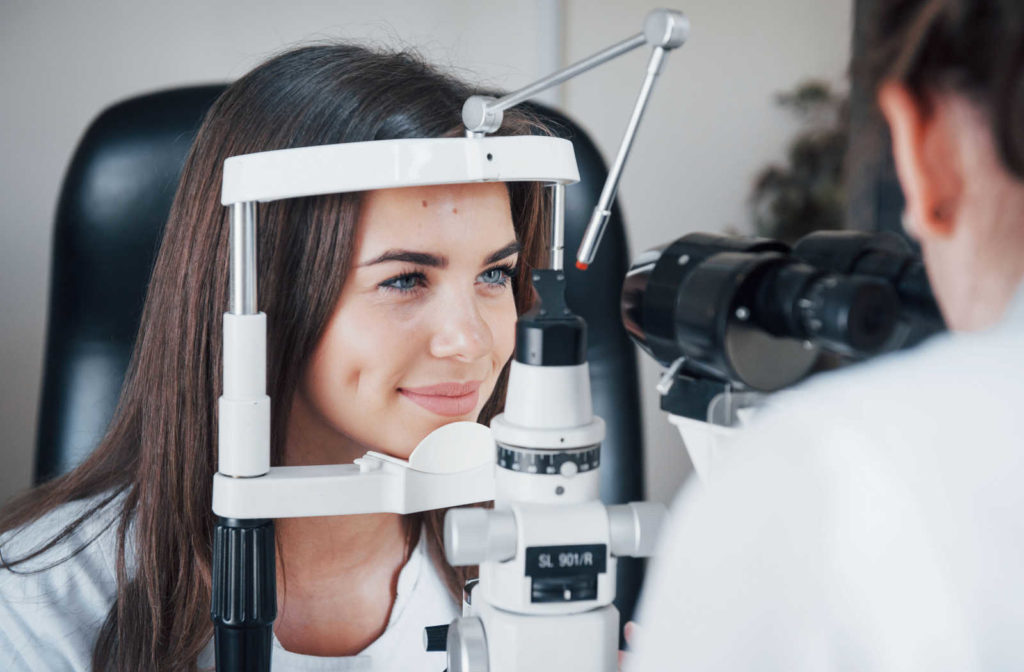A comprehensive eye exam is more than just about vision; it can also provide information about a person’s overall health. A thorough examination of the lens, retina, and optic nerve can reveal several systemic disorders, such as high blood pressure and diabetes, sometimes before other symptoms appear.
The eyes, with their delicate structures such as nerves, blood vessels, and connective tissues, can provide early warning signs of a variety of serious health problems. This is important for patients because early detection of diseases is often the key to avoiding serious consequences.
The benefits of visiting your optometrist on an annual basis extend far beyond keeping your eyes in good working order.
What Conditions Can an Eye Exam Detect?
Here are a few examples of health issues that may be discovered during an eye exam:
Marfans Syndrome
Marfan’s Syndrome is a genetic disorder that affects the connective tissue in the body. Extreme height and thinness, as well as unusually slender fingers, are common symptoms of Marfan’s, but the condition is sometimes diagnosed by eye doctors who observe characteristic changes in the string-like tissue that holds the eye’s crystalline lens in place.
Marfan’s must be diagnosed as soon as possible because the condition is frequently associated with aortic wall weakness. Aorta rupture is almost always fatal.
Cancer
When the doctor examines the eye, they will look through to the pupil at the back of the eye. If there are dark spots, this could be a sign of early melanoma development. Following that, tests to look for cancer cells will be performed, and an eye doctor will monitor it regularly.
Thyroid Disease
If your eyes bulge or protrude from retracting eyelids, your optometrist will suspect hyperthyroidism, which Grave’s Disease commonly causes. This condition affects the tissues and muscles around the eye, and symptoms may include blurry vision, vision loss, or dry eyes.
Diabetes
Blurred vision usually just means you need glasses, but you should have your eyes checked anyways. Blurred vision can indicate a medical problem with the eye (such as cataracts or macular degeneration) and a more serious illness such as diabetes.
73% of diabetic patients sampled reported blurred vision. Even if you don’t have vision problems, your optometrist may be able to detect diabetes during an eye exam by looking for irregularities in your retina.
Heart Disease
Optometrists may be able to detect early signs of heart disease in the eyes. If the retina is carefully examined using an imaging tool called optical coherence tomography (OCT), doctors may be able to detect microscopic marks left by an eye stroke. These marks can appear in the retinas of healthy people, but there are more marks in people with heart disease.
Stroke
Blood vessel blockages in the back of the eye can sometimes be detected by eye doctors, posing a high stroke risk. A regular vision exam, especially in older people, can help detect a stroke before it occurs.
Rheumatoid Arthritis
About 25% of rheumatoid arthritis (RA) patients have eye problems, the most common of which is dry eye. Your doctor will suspect rheumatoid arthritis if you have two bouts of iritis, or painful inflammation of the iris, in a year, or three in 18 months.
Inflammatory chemicals are abundant in the blood of people with RA. These can sometimes migrate to the eyeball as well as the joints.
Brain Injuries and Neurological Conditions
The optic nerve in the eye is essentially a brain extension. An eye exam can detect any neurological condition that affects nerve cells, including Parkinson’s disease and multiple sclerosis.
The muscles that move the eyes are supplied with nerve cells that are controlled by specific parts of the brain. Brain injuries, such as strokes, can have an impact on the parts of the brain that control eye coordination and tracking.
A thorough eye exam can detect problems with eye movement, and vision training can improve the eyes’ ability to track and collaborate.
High Blood Pressure
High blood pressure, also known as hypertension, affects roughly one-third of all adult Americans. Patients with high blood pressure may have unusual bends, kinks, or tears in their eye vessels. These are usually visible during a dilated eye exam and can provide a clear picture of your risk of stroke, aneurysm, or other complications.
Book Your Comprehensive Eye Exam
It’s important to understand that some of these symptoms do not necessarily mean you have a serious health condition. Your optometrist will advise you to seek additional testing from a specialist or your primary care provider if an eye exam reveals a potential health issue.
Make an appointment for a thorough eye exam at Eye Care Plus to get a complete assessment of your vision and health.



